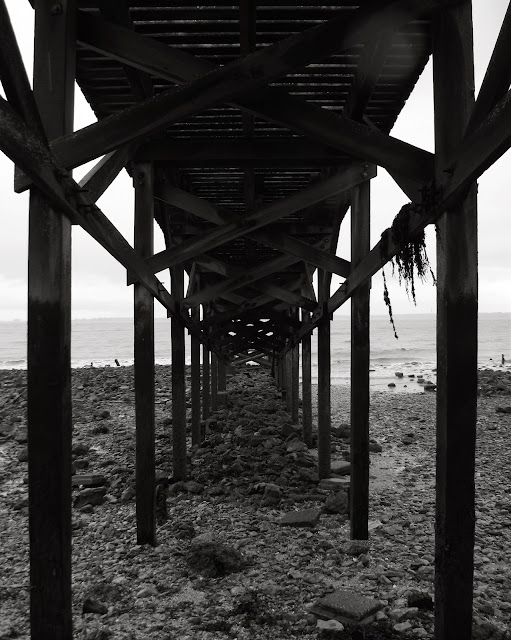Settled since the Roman period, Canvey was first protected from the sea in the 1620s, the reclamation work, which conjoined a number of smaller islands, possibly undertaken by the Dutch engineer Cornelius Vermuyden. The island was largely agricultural until the twentieth century, but in the 1930s became popular with Londoners wanting to take the air.
The International style Labworth Café, of reinforced concrete, was opened in 1933. This is the only building in the world designed solely by the famous engineer Ove Arup, who modelled it upon the bridge of RMS Queen Mary. Originally called the Canvey Island Café, this became known by the word "Labworth" painted in large letters on the inland side, the building constructed as it was on the Labworth Estate.
Canvey was inundated in 1953 by the North Sea flood, which claimed 58 lives, and between 1973 and 1982 gained 15 miles of upgraded and massive sea walls, running around 75% of the island. Construction of these buried the supporting piles of the Labworth, reducing it to two storeys.
The building only narrowly escaped demolition, but found a new lease of life in the late 1990s, having been Grade II listed in 1996. In 2001 the building was altered again, decidedly for the worse, when the shelters that had formed its wings, which originally had ship-like railings atop them, were enclosed.
During WWII a common weapon against shipping was the magnetic naval mine, often dropped by parachute. Although this was largely a redundant technology by the time of the Cold War, in 1963 the Admiralty built the Degaussing Range Station (below), known locally as the Canvey Loop.
In two loops of thick cable on the bed of the Thames a charge was induced by the magnetism of passing ships' hulls, which charge was detected at the station. Where the readings demanded this, the ships could then be degaussed. The station closed when the new seawall, the steel piles of which would have severed the cables, was constructed, although it was only declassified in 1993 - the equipment remains partially secret.








No comments:
Post a Comment